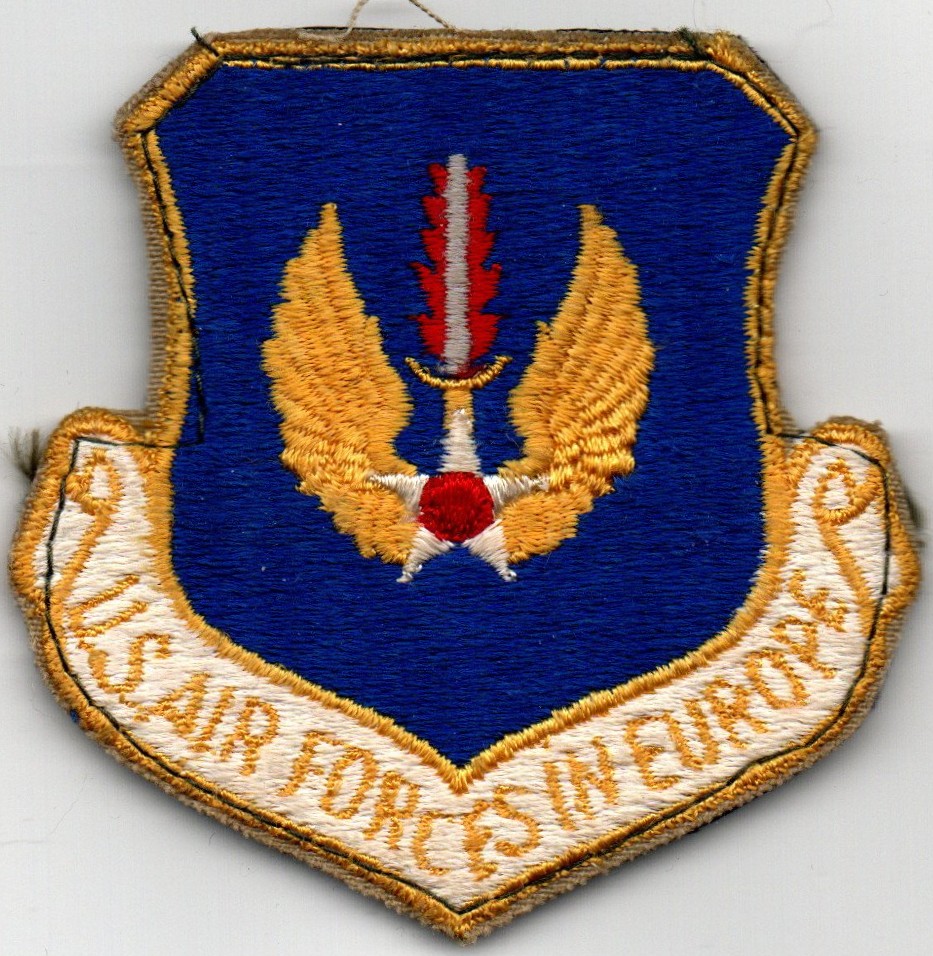
The History of USAFE in the 70’s. 80’s and post cold war
Changes continued through the early 1970s. Headquarters USAFE transferred from Lindsey Air Station, Germany, to Ramstein Air Base in March 1973 and NATO’s Allied Air Forces Central Europe was established at Ramstein Air Base in June 1974. The USAFE commander in chief then took command of Allied Air Forces Central Europe, in addition to commanding U.S. Air Force units in Europe.
In 1976, the new McDonnell Douglas F-15A Eagle air superiority fighter was introduced into USAFE service. The Soviet Union’s new MiG and Sukhoi fighters made the U.S. Department of Defense anxious. The Mikoyan-Gurevich MiG-25 ‘Foxbat’ made them pull out all the stops to get the F-15A into USAFE. The F-15A was deployed to Germany in April 1977 with the 36th TFW at Bitburg Air Base West Germany. The 32nd TFS at Soesterberg AB Netherlands was also upgraded to the McDonnell-Douglas F-15A Eagle as part of Project Ready Eagle. By 1986, all USAFE F-4 wings were replaced by F-15 and F-16 fighters. The 36th TFW’s existing F-4E Phantoms were incorporated into three new USAFE squadrons which were established at Hahn Air Base (313th TFS), Spangdahlem Air Base (480th TFS) and Ramstein Air Base (512th TFS). Preparations for the switch to the F-15 went ahead at full speed. Its introduction to the USAFE was given the project name Ready Eagle and, naturally, included transition training for the USAFE pilots.
This retraining was the joint responsibility of USAFE and TAC and first began in January 1976 at Langley AFB, Virginia, where the 1st TFW, was stationed. At Langley AFB, the USAFE’s future F-15 pilots were given a crash course that familiarized them with the new aircraft in a relatively short time. The first F-15As arrived at Bitburg AB on 7 January 1977. These were two TF-15A (later redesignated as F-15B) trainers that had flown non-stop from Langley AFB in seven and a half hours. These Eagles were to be used primarily for ground crew familiarization in anticipation of the arrival of the 525th TFS’s first F-15As. The 23 aircraft for this first operational squadron left Langley AFB on 27 April 1977 for a mass Atlantic crossing. Over the following months, the aircraft for two other squadrons (22nd TFS and 53rd TFS) arrived. The 36th TFW’s full strength of 79 fully operational F-15As was reached in December 1977. Project Ready Eagle was completed in precisely one year. However, after flying the F15A and F-15B for just 18 months, the USAFE exchanged these models for the newer F-15C and F-15D Eagles. In May 1980, the 32d flew five of its F-15A/B Eagles to Eglin AFB, Florida to participate in the weapons systems evaluation program. While at Eglin AFB, the united swapped its aircraft for the newer models. These planes arrived at Soesterberg AB on 13 June, making the 32d the first unit in the USAFE to be equipped with the latest versions of the F-15. The 32nd completed the upgrade on 25 November 1980. At that time the squadron possessed eighteen F-15C and two twin-seat F-15D fighter aircraft.
PAGE UNDE CONTRUCTION